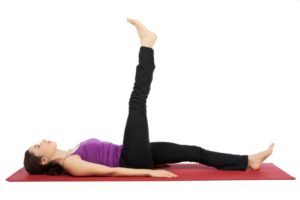 Lead author Dr. Peter Rowe, of Johns Hopkins University School of Medicine in Baltimore, MD, and colleagues believe their findings point to certain forms of physical therapy as an effective treatment for chronic fatigue syndrome (CFS).
Lead author Dr. Peter Rowe, of Johns Hopkins University School of Medicine in Baltimore, MD, and colleagues believe their findings point to certain forms of physical therapy as an effective treatment for chronic fatigue syndrome (CFS).
The researchers recently published their findings in the journal PLOS One.
Also referred to as myalgic encephalomyelitis (ME), CFS is defined as persistent fatigue that cannot be alleviated with sleep or rest, and that is exacerbated by physical or mental activity.
As well as severe fatigue, symptoms of CFS may include muscle pain, poor memory and concentration, joint pain, headaches, tender lymph nodes in the neck or armpit, sore throat, and problems sleeping.
Diagnosing CFS is tricky; doctors do not know what causes the condition, and there are currently no tests for the disorder. Also, because symptoms of CFS are similar to so many other disorders, the condition often gets overlooked.
The treatment for CFS can be just as tricky as the diagnosis; there are currently no medications approved for the condition, largely because it is not known what causes the disorder.
However, Dr. Rowe and colleagues believe specific forms of physical therapy could be a possible treatment option, after finding certain body movements may provoke symptoms of the condition.
In previous work, Dr. Rowe and study co-author Rick Violand, a physical therapist, noticed that in some patients with CFS, body maneuvers that put a strain on their spine, nerves, or muscles appeared to trigger some symptoms of the condition, including fatigue and mental fogginess.
“We thought this reflected a fundamentally important and previously unappreciated mechanism of symptom provocation,” Dr. Rowe told Medical News Today.
Supine straight leg raise triggered CFS symptoms
To further investigate their observations, the researchers conducted a clinical study involving 60 individuals with CFS and 20 without the condition.
Participants completed either a supine straight leg raise or a sham leg raise for 15 minutes. In the supine straight leg raise, a person lays on their back while raising and holding one leg; the exercise is designed to strain the muscles and nerves.
Every 5 minutes during the 15-minute activity, subjects self-reported any body pain, lightheadedness, headaches, and problems with concentration. Participants were also required to report such symptoms 24 hours after the activity.
The team found that patients with CFS who completed the supine straight leg raise reported experiencing more body pain and concentration difficulties during the activity, compared with CFS patients who completed the sham leg raise.
What is more, 24 hours after, patients with CFS who completed the supine straight leg raise reported more intense lightheadedness and poorer symptoms overall, compared with CFS patients who did the sham exercise.
Among subjects who completed the supine straight leg raise, those with CFS reported experiencing more symptoms during the activity and 24 hours after, compared with individuals without CFS.
Based on their findings, the researchers suggest that even mild to moderate nerve and muscle strain could be enough to trigger symptoms of CFS.
“If simply holding up the leg of someone with CFS to a degree that produces a mild to moderate strain is capable of provoking their symptoms, prolonged or excessive muscle strain beyond the usual range of motion that occurs during daily activities might also produce symptom flares.”
Study co-author Kevin Fontaine, Ph.D., University of Alabama at Birmingham
Physical therapy may be a feasible treatment for CFS symptoms
MNT asked Dr. Rowe what it is about nerve and muscle strain that might trigger symptoms of CFS.
“Our focus was on establishing the potential for nerve/muscle strain to aggravate the cardinal symptoms of ME/CFS, but [the study] was not designed to examine the mechanisms for why it might do so,” he told us.
“We do know that a straight leg raise maneuver places traction on the muscles and peripheral nerves in the lower limb, as well as on the lower spinal nerve roots, the meninges, and the sympathetic nervous system chain,” he continued.
“In addition, it can impose a downward pull on the spinal cord. How that mechanical strain then might translate into symptoms is unclear at this time.”
While further research into the link between nerve and muscle strain and CFS is required, the team believes the findings point to physical therapy as a possible treatment for symptoms of CFS.
MNT DT






